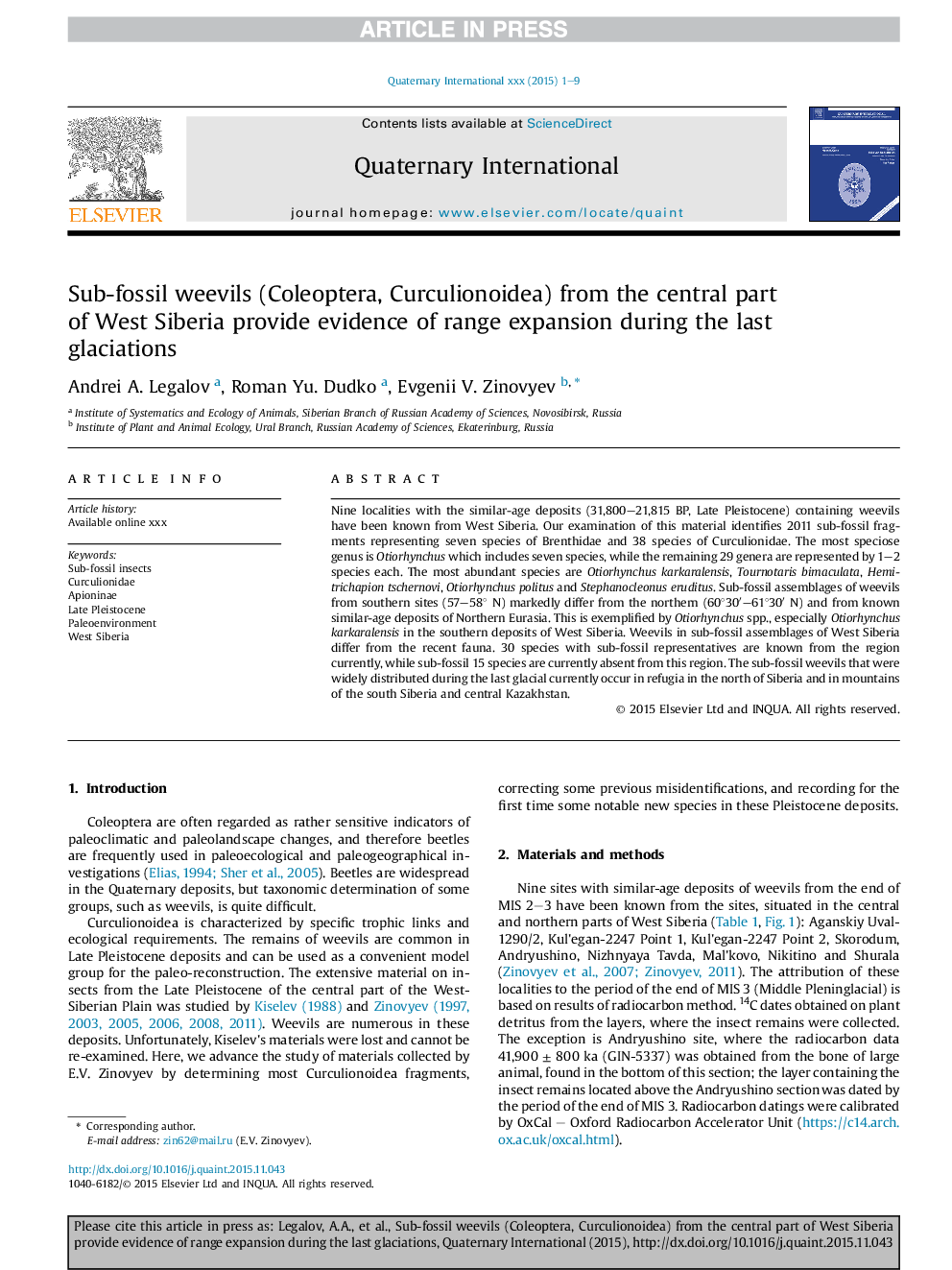| کد مقاله | کد نشریه | سال انتشار | مقاله انگلیسی | نسخه تمام متن |
|---|---|---|---|---|
| 5113965 | 1484087 | 2016 | 9 صفحه PDF | دانلود رایگان |
عنوان انگلیسی مقاله ISI
Sub-fossil weevils (Coleoptera, Curculionoidea) from the central part of West Siberia provide evidence of range expansion during the last glaciations
دانلود مقاله + سفارش ترجمه
دانلود مقاله ISI انگلیسی
رایگان برای ایرانیان
کلمات کلیدی
موضوعات مرتبط
مهندسی و علوم پایه
علوم زمین و سیارات
زمین شناسی
پیش نمایش صفحه اول مقاله

چکیده انگلیسی
Nine localities with the similar-age deposits (31,800-21,815 BP, Late Pleistocene) containing weevils have been known from West Siberia. Our examination of this material identifies 2011 sub-fossil fragments representing seven species of Brenthidae and 38 species of Curculionidae. The most speciose genus is Otiorhynchus which includes seven species, while the remaining 29 genera are represented by 1-2 species each. The most abundant species are Otiorhynchus karkaralensis, Tournotaris bimaculata, Hemitrichapion tschernovi, Otiorhynchus politus and Stephanocleonus eruditus. Sub-fossil assemblages of weevils from southern sites (57-58° N) markedly differ from the northern (60°30â²-61°30â² N) and from known similar-age deposits of Northern Eurasia. This is exemplified by Otiorhynchus spp., especially Otiorhynchus karkaralensis in the southern deposits of West Siberia. Weevils in sub-fossil assemblages of West Siberia differ from the recent fauna. 30 species with sub-fossil representatives are known from the region currently, while sub-fossil 15 species are currently absent from this region. The sub-fossil weevils that were widely distributed during the last glacial currently occur in refugia in the north of Siberia and in mountains of the south Siberia and central Kazakhstan.
ناشر
Database: Elsevier - ScienceDirect (ساینس دایرکت)
Journal: Quaternary International - Volume 420, 28 October 2016, Pages 233-241
Journal: Quaternary International - Volume 420, 28 October 2016, Pages 233-241
نویسندگان
Andrei A. Legalov, Roman Yu. Dudko, Evgenii V. Zinovyev,